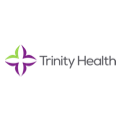Take your first step towards data agility.
Start your digital healthcare transformation journey with a no-code workflow solution from Formstack.

Is your healthcare organization suffering from bad data? Learn how digital agility can streamline workflows, improve productivity, and clean up your data.
We’ll send this and other digital agility resources directly to your inbox.

Having the ability to measure care quality and share health outcome data can increase revenue through performance incentive programs and provide important insights to improve patient care.However, if you’re working with large sets of poorly annotated or unlabeled data, updates to reports require a heavy lift from your IT department.
Staying on top of reporting requirements is tough for organizations of any size. Standardization of clinical coding standards is critical to the quality and safety of healthcare delivery. Adopt a solution that automates and standardizes field labels to ensure anyone at your organization can accurately pull reports.

While healthcare interoperability is an important part of today’s healthcare landscape, many organizations lack the tools to quickly and securely share data with internal departments or external payers and providers.
Your business needs analytics and software tools to collect and share data, support value-based care initiatives, and promote patient empowerment. With an easy-to-use, no-code data management solution, anyone on your team can accurately and securely generate reports and share data.

For many healthcare organizations, data is managed across a vast array of tools. Maybe you’re managing patient data in an EHR, but are communicating with patients through a separate online portal. When data housed in one system is not shared with another in a timely manner, reporting is complicated or inaccurate, information requests are difficult to fill, and patient satisfaction ultimately suffers.
The first step to achieving a strong, reliable, and standards-based foundation for healthcare data is identifying disparate data and initially assessing your data’s quality. Ultimately, your goal is to combine data sets into a system you can manage. A well-managed single source of truth is critical to achieving a strong, value-based healthcare system.







